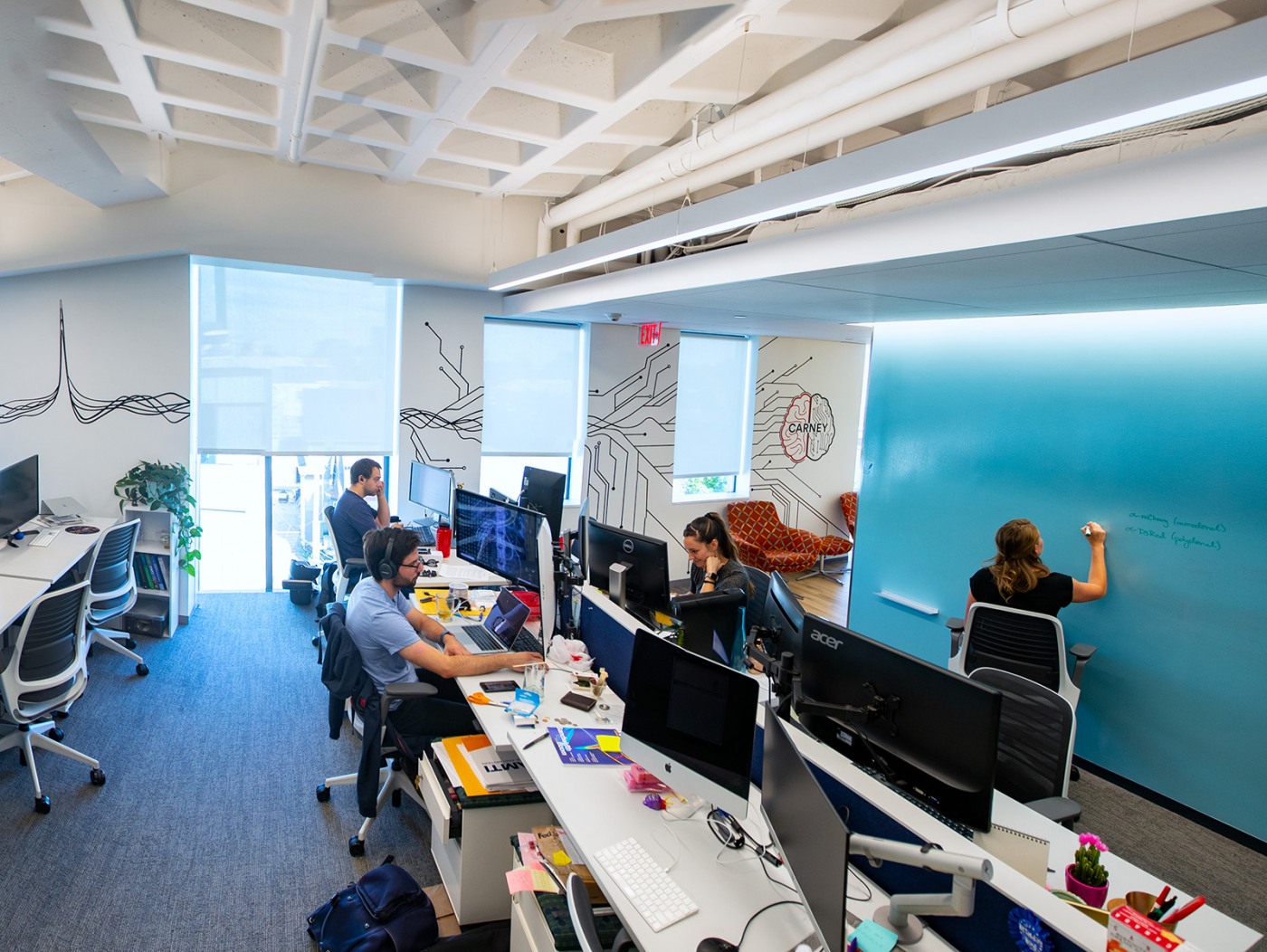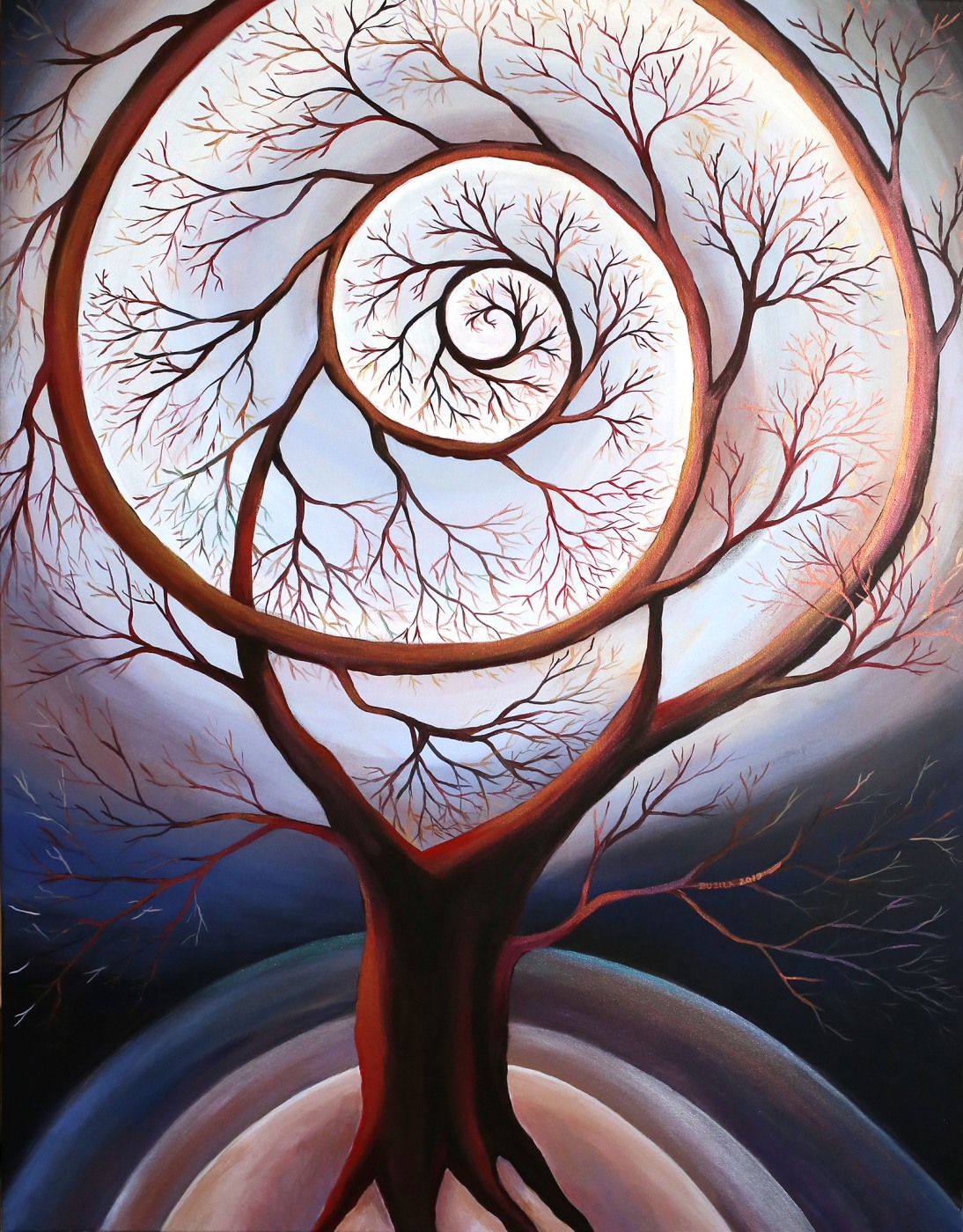PROVIDENCE, R.I. [Brown University] — Visual art and brain science. While the number of intriguing combinations of study created by students at Brown are countless, few are as illustrative of how the University’s innovative curriculum encourages intellectual risk-taking and the integration of disparate academic fields.
And the walls in the Carney Institute for Brain Science’s new state-of-the-art facility in the heart of College Hill are now bringing that to life.
One semester after moving into its new space at 164 Angell St. in Providence, the Carney Institute installed this month three brain-inspired works of art by Brown students, each commissioned specifically for the space. Carney’s goal in seeking student-produced work was to bridge the arts and sciences and encourage students from a variety of academic disciplines to explore brain science through art.
On Friday, Sept. 20, the Carney Institute will host a “Meet the Student Artists” event from 3 to 5 p.m., where members of the community can view the artworks and discuss the pieces with the artists who created them: doctoral students Elaina Atherton and Ciprian Buzila, and Class of 2022 undergraduate Annie Ge.
In advance of the event, each artist took the time to share a few insights about the inspiration behind each piece and how they chose to highlight the established and evolving links between visual art and brain science.

Elaina Atherton
Ph.D. student in Biotechnology
Q. Tell us about your artwork.
A. “Interfacing” is an eight-panel vinyl wall decal that explores the surreal intersection of machines and the human nervous system. “Interfacing” shows the transition of a body in motion into an electrical neural signal trace and then a circuit board trace. The visual overlap of the axon-like hair, electrical traces and circuit board traces touches on the common principles of physics of which the biological and the engineered both rely.
Q. If you had to describe your artwork in one word, what would it be and why?
A. Interfacing. The piece is about the interfaces between nervous system and machines, and more broadly the integration of neuroscience and engineering.
Q. What inspired the creation of your piece?
A. In my Ph.D., I study brain-machine interfaces. I spend a lot of time thinking about what the ideal brain-machine interface might look like, and the many interdisciplinary approaches required to create it.

Ciprian Buzila
Ph.D. student in History of Art and Architecture
Q. Tell us about your artwork.
A. I used the metaphor of the tree of life and envisioned the human brain as a spiral cosmic tree, suggesting that it evolves and changes continuously in a mysterious fashion. I used acrylic colors on 36- by 48-inch canvas.
Q. If you had to describe your painting in one word, what would it be and why?
A. Evolution, because I believe the human brain will continue to unveil its potential throughout time.
Q. What inspired the creation of your piece?
A. The representations of the tree of life in the history of art have always intrigued me. They illustrate the foundation of the universe and that which connects all of life together in peace and harmony.

Annie Ge
Class of 2022 undergraduate concentrating in History of Art and Architecture, Economics
Q. Tell us about your artwork.
A. I created an installation made of acrylic on parallel layers of perspex, which shows a three-dimensional structure of the brain. Each layer refers to one cross-section from an MRI scan of the brain. However, a range of colors is used to differentiate from the conventional black and white scans.
Viewers can interact with the installation by adjusting their body positions to explore the differences created by perspectives. The medium of the work is aimed to reveal the complexity of our brain through a more engaging and artistic way that we rarely see in science classes. Presenting a more visualized art form, the discovery of brain science and ourselves can be more accessible to all.
Q. If you had to describe your artwork in one word, what would it be and why?
A. Self, because the brain makes us who we are.
Q. What inspired the creation of your piece?
A. I was inspired by the layer drawings created by Japanese artist Nobuhiro Nakanishi, who uses perspex as the primary medium.
This story is adapted from a version originally published by Sara Feijo, communications and outreach manager at the Carney Institute for Brain Science.